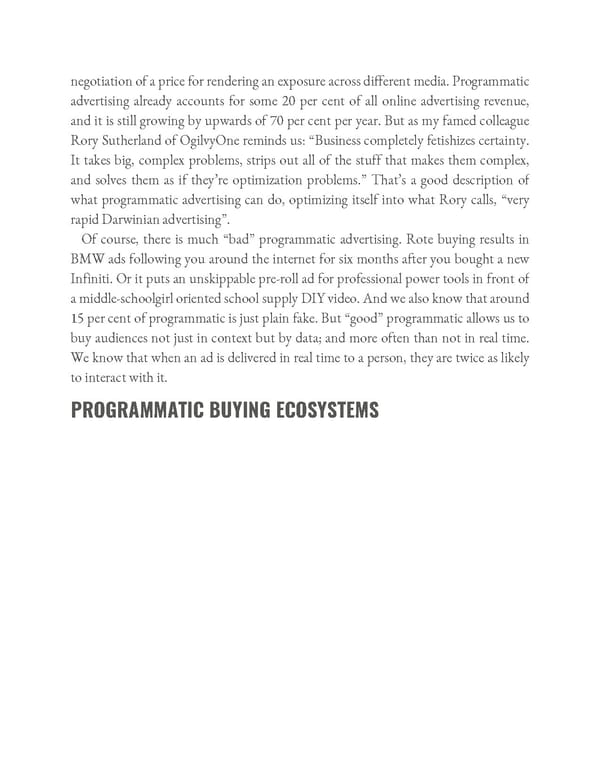negotiation of a price for rendering an exposure across different media. Programmatic advertising already accounts for some 20 per cent of all online advertising revenue, and it is still growing by upwards of 70 per cent per year. But as my famed colleague Rory Sutherland of OgilvyOne reminds us: “Business completely fetishizes certainty. It takes big, complex problems, strips out all of the stuff that makes them complex, and solves them as if they’re optimization problems.” That’s a good description of what programmatic advertising can do, optimizing itself into what Rory calls, “very rapid Darwinian advertising”. Of course, there is much “bad” programmatic advertising. Rote buying results in BMW ads following you around the internet for six months after you bought a new Infiniti. Or it puts an unskippable pre-roll ad for professional power tools in front of a middle-schoolgirl oriented school supply DIY video. And we also know that around 15 per cent of programmatic is just plain fake. But “good” programmatic allows us to buy audiences not just in context but by data; and more often than not in real time. We know that when an ad is delivered in real time to a person, they are twice as likely to interact with it. PROGRAMMATIC BUYING ECOSYSTEMS
 Ogilvy on Advertising in the Digital Age Page 247 Page 249
Ogilvy on Advertising in the Digital Age Page 247 Page 249